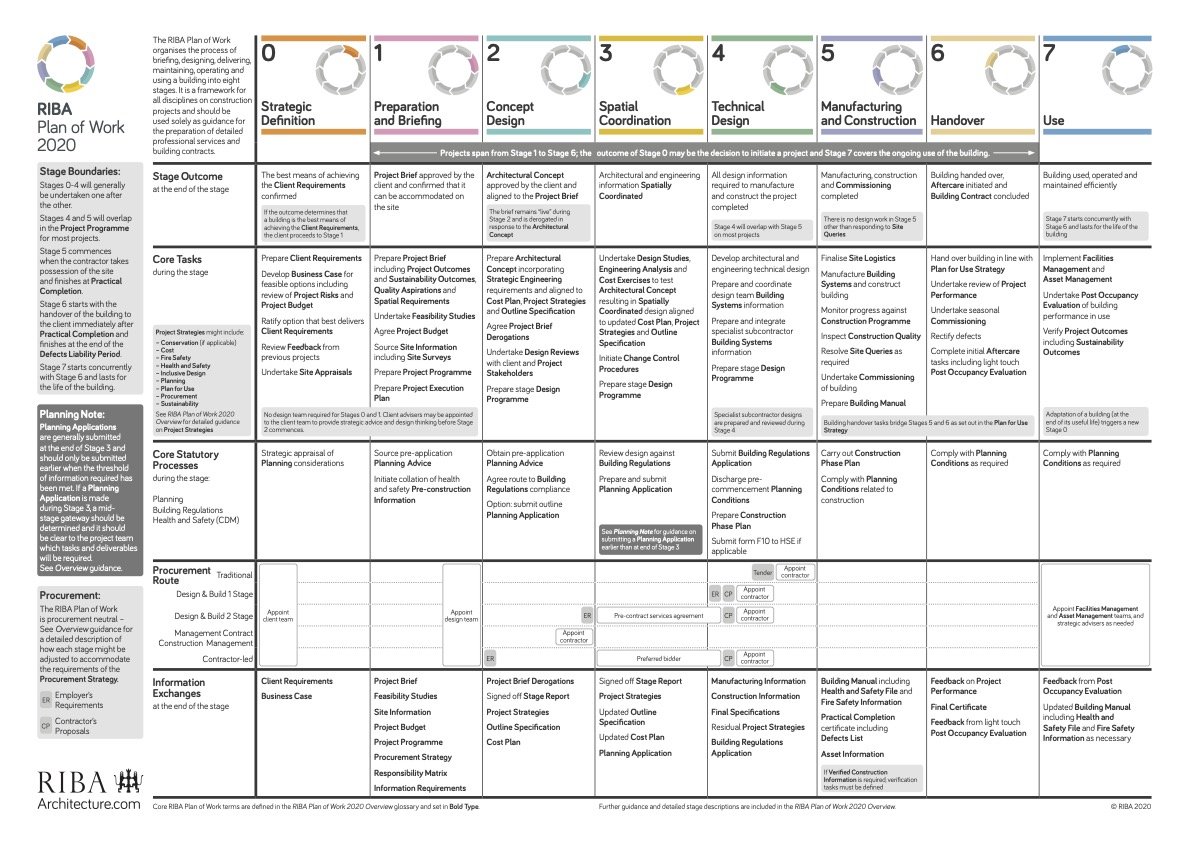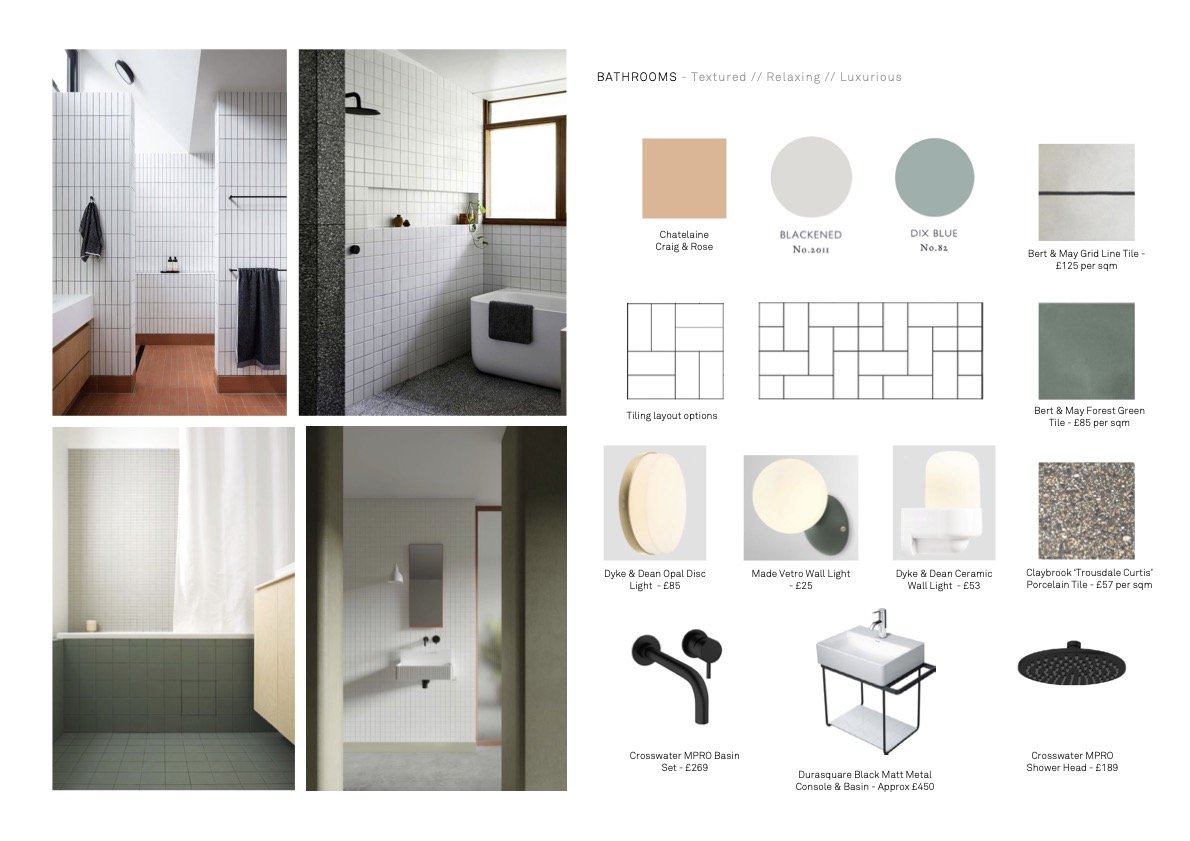The RIBA (Royal Institute of British Architects) has developed an industry recognised plan of works. It breaks the design and construction process into different steps or stages to clarify the expectation and roles for everyone involved in a construction project. It is referred to as the RIBA Plan of Works (click to visit the RIBA website where more detail can be found). It is particularly useful for large project with multiple consultants and complicated funding and procurement conditions to ensure everyone knows what to do and what is expected of them. An overview image below illustrates the principle.
the riba plan of works
It is still very useful for smaller projects as the stages are well recognised and it provides key milestones. However for smaller projects we simplify it in the following way:
Stage 0-1
Stage 1 - Concept book extract
This is the pre-design phase. It covers initial discussion and meetings, we like to discuss core objectives and understand the values of our clients. In most cases we create what we call a ‘concept book’ identifying and abstractly illustrating 4 or 5 core principles. It may also involve some sketch plans as an initial exploration of options. Sometimes this stage is referred to as feasibility or briefing.
Stage 2
Referred to as concept design, this is where the ideas are drawn in a more precise and formal way to fully explore the proposal and develop the design into a viable proposal. We generally create a 3D BIM model of the scheme so it can be fully explored whether that be specially, or for daylighting, or even thermal performance.
Sun path study for north facing extension; it was important to understand where we could catch direct sunlight which in turn informed the design.
Stage 3
Simply put, stage 3 is the planning application stage. Develop and prepare the design for submission to the local authority or other interested parties. This may include a design statement, sometimes know as a design and access statement that accompanies the drawings and makes the argument as to why the application should be approved. This stage would also include collating information from other consultants that might be necessary for a planning application such as a structural impact assessment or a tree impact assessment or daylighting analysis.
For projects that we are appointed to do interior design we also create a look and feel document during stage 3. This is relevant of course when the materiality of the interior is connected to the exterior. It is also important to ensure the building fabric (external envelope) is also working in harmony with the intended interior finishes. The look and feel document is a suggestion of colour texture and material for each space along with some suggestions of fixtures and fittings. With and aesthetic agreed the technical work around the spaces can begin and a specification and budget can start to be drawn up.
Pages from the bristow mews project look and ffel document
Pages from the bristow mews project look and ffel document
Stage 4
Tender. Once approved the design moves into a higher level of resolution, coordinating the structural and mechanical information as well as creating a thorough specification to ensure accurate and comparable prices can be obtained from potential contractors.
Stage 5
Contract. Overseeing the works on site, ensuring that the design intent is maintained and the contractor has all the information necessary to fully implement the design. This also includes administrating the building contract and certifying progress for payment
Stage 6
Rectifications. Depending n the size and complexity of the project a period of rectification is entered into where any issues are logged and then repaired before final payments are made and the contract concluded.
Stage 7
Post occupancy. It is sometimes necessary to monitor building performance and maintain certain systems.




